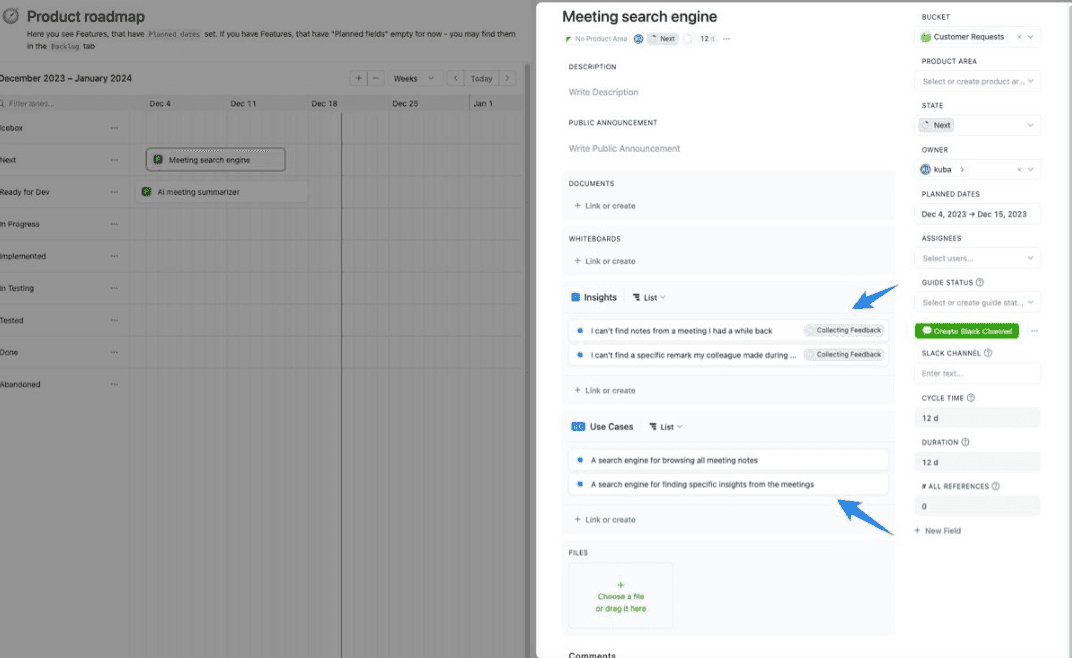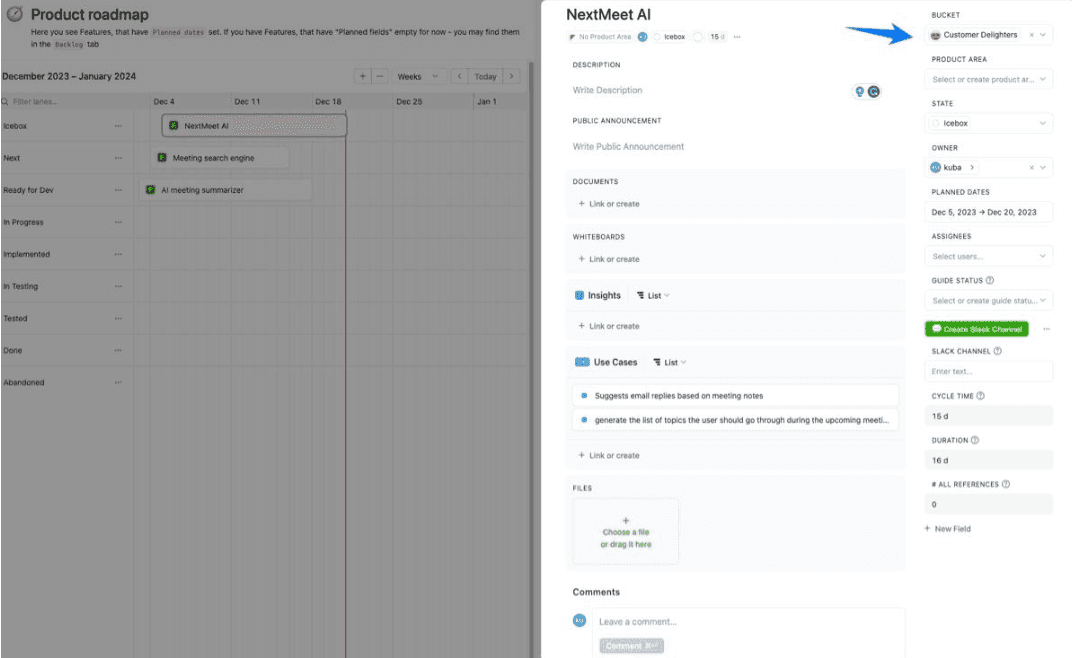Prioritizing Features with the Bucket Technique
What is the feature bucket prioritization technique?
The feature bucket prioritization technique is a method for product managers to organize and prioritize new product features. It was invented by Adam Nash, a Product Leader and CEO at Daffy.
The technique involves separating potential new features into three “buckets”:
- Metrics Movers - Features that are likely to have a direct and sizable impact on key metrics like revenue, daily or monthly active users, retention, etc.
- Customer Requests - Features that are frequently requested by customers through support tickets, user surveys, customer advisory boards, or other feedback channels.
- Customer Delighters - Features that surprise and delight customers but may not have a clear impact on metrics or be frequently requested. They provide an “amazing” customer experience.
Those three categories help product teams define clear reasons behind implementing certain features. It eliminates the “gut feeling” from product development. So, instead of saying:
“Look how cool this feature is. Let’s do it!”
You can say:
“This feature will directly impact our revenue because X, Y, Z…”
Much more convincing, right?
Let’s break down each category in more detail:
Metrics movers
These are the features which will significantly move your business metrics, such as:
- Engagement
- Growth
- Revenue
This bucket is usually the smallest. In his explanation, Nash points out that only a few features of your products will be the actual metric movers.
The upside is that you can define them ahead of time.
Before you go to market, you need to know why your users might buy a subscription for a service like this.
In other words, you have to understand what features will convince them to invest money in your product.
Say you’re working on an AI meeting assistant for remote product teams. From user interviews, you know multiple meetings a day are a standard for this target audience. They need a way to keep track of the most important insights from all of them.
So, a metric mover for this target audience might be an AI meeting summarizer that highlights the key takeaways from the meetings and informs the user about any tasks assigned to the user during each meeting.

This bucket is the hardest to crack because it requires a lot of research from your side.
However, customers are often vocal about their needs. And if you want your product to thrive, you need to listen to them.
Customer requests
In this bucket, you’ll put any features your customers are actively requesting. Easy-peasy.
Well, not exactly.
As you know, for every 10 customers, you could gather at least 11 feature suggestions for your product. Relying your product development on those features alone will turn it into a complete mess.
Saying that, as a product professional, you know the power of listening to your users. Approach each suggestion with humility and consideration. See how you can address issues hiding behind the feature requests.
For example, while scrolling the list of user suggestions for your AI meeting assistant app, you spotted two feature requests:
A search engine for browsing all meeting notes
A search engine for finding specific insights from the meetings
You can address both of those issues with one feature – a more comprehensive search engine, with both those features included.

This will show users you don’t just listen to their needs, but find ways to exceed the expectations. And there’s no better way to delight your customers…
Or is it?
Customer delighters
These are the features nobody asked for, but everybody needed. Your customers are delighted to see them because the features solve their pain uniquely or unexpectedly.
For this to happen, you need to excel at active listening to your users and leverage technology to innovate a delightful experience for them.
Say you want your AI meeting assistant to go beyond recording, summarizing, and organizing meeting notes.
How about it also suggests email replies or generates a list of topics the user should go through during the upcoming meeting?

This additional set of features responds to a specific pain point your users experience (struggling to keep up with all the meetings) but solves it unusually.
Such a novel approach signifies a Customer Delighter. Keeping track of those will help you consistently astonish your users with the product quality – and there’s no better growth leverage than that.
The PM’s hot take
As every prioritization technique strives for simplicity, the biggest downside of using these three buckets is… well, oversimplifying stuff. What if your feature is both a delighter and a metric mover? What if you have several major features that can go in multiple buckets? As always, this method is no silver bullet - but if paired with other techniques that address product development on a more granular level, it might do the job just fine.
Conclusion
The feature bucket prioritization technique provides product managers with a structured approach to focus efforts on initiatives most likely to directly impact business metrics or customer happiness.
Of course, the bucket levels may adjust over time based on what is learned. Prioritizing through testing hypotheses is an ongoing process. And if you need a space to organize it, check out one of our templates for Product Managers.
Psst... Wanna try Fibery? 👀
Infinitely flexible product discovery & development platform.